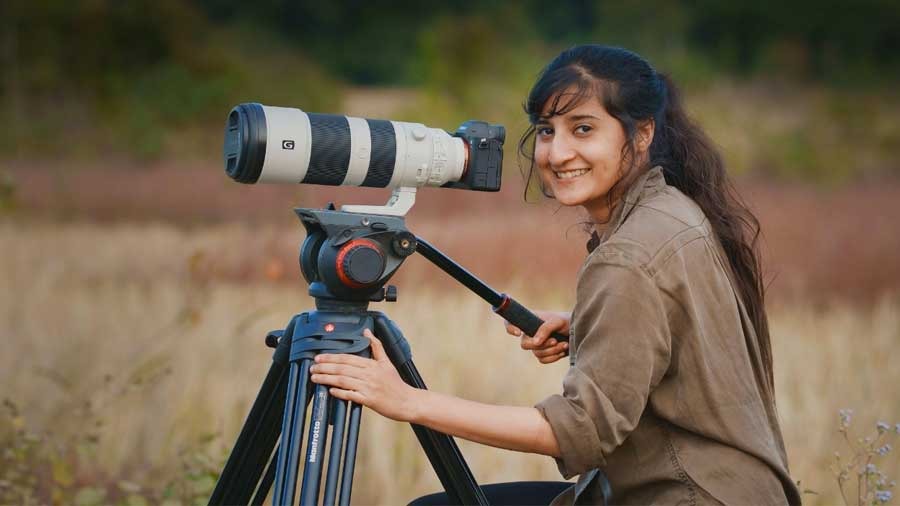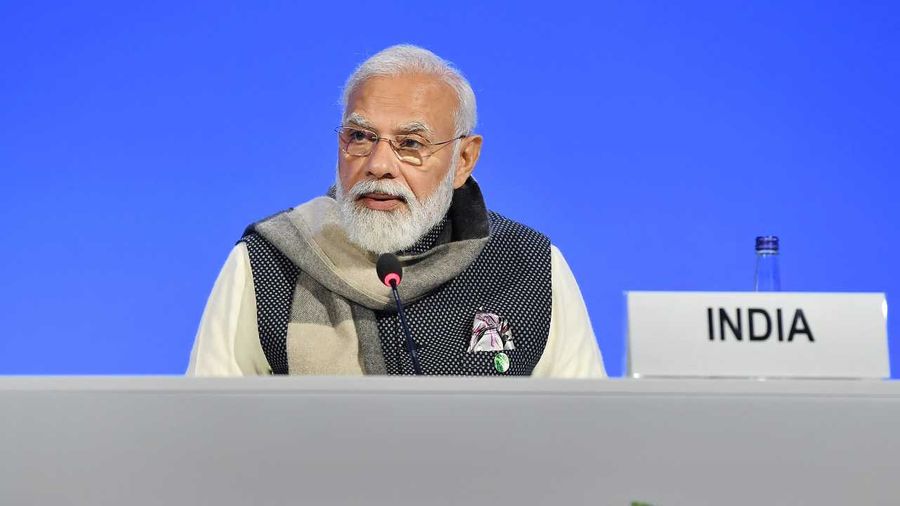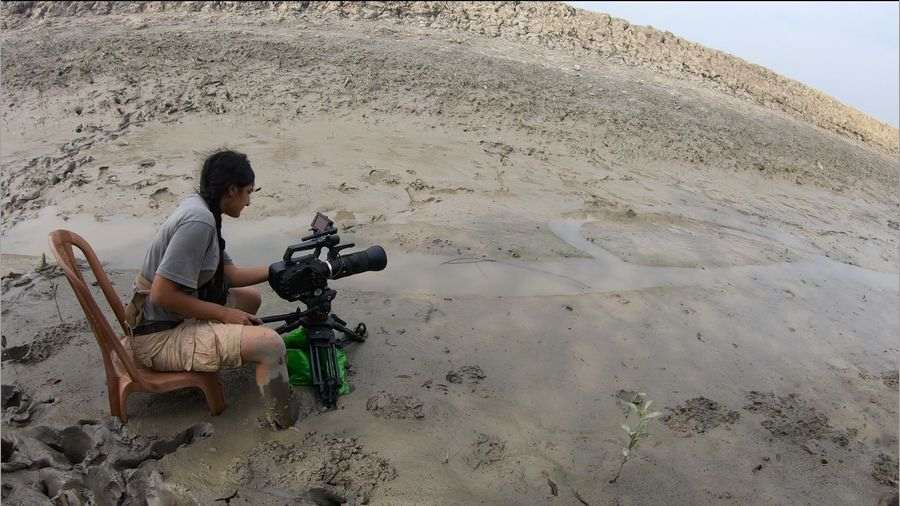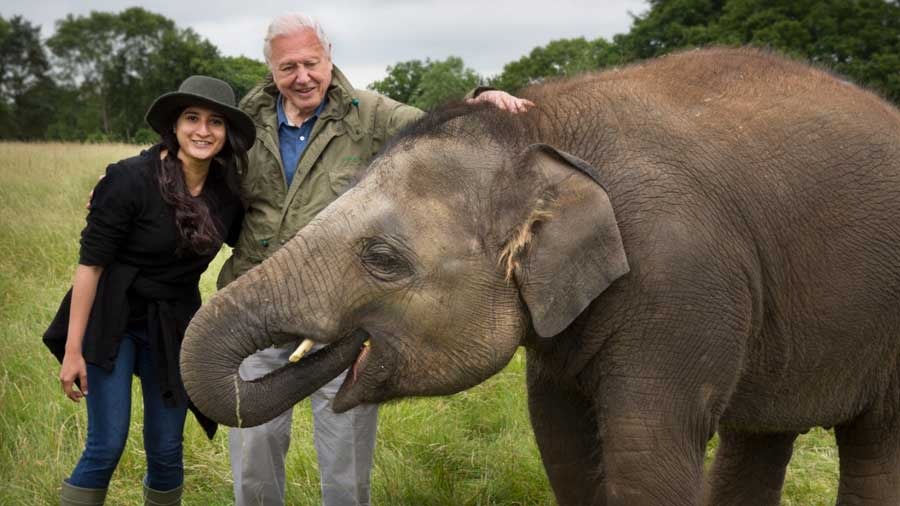“If not now, then when? If not us, then who?” is one of those catchphrases that has long gone viral on Instagram. But its immediacy is yet to resonate in the domain of climate change, which currently poses the greatest existential threat to humankind.
As someone who has worked intimately with nature and seen Mother Earth in many of her glorious and gruesome avatars, filmmaker Ashwika Kapur is well-versed with the need to communicate more urgently on climate change.
Winner of The Green Oscar for best emerging filmmaker for her film Sirocco, Kapur, who has worked with the likes of Animal Planet and BBC, will be speaking at a panel at the ongoing COP26 in Glasgow.
Ahead of her discussion on Saturday about how wildlife and natural history filmmaking can help in the fight against the climate and biodiversity crises, My Kolkata caught up with Kapur to get her insights on COP26, her most memorable experiences as a storyteller, working with her hero Sir David Attenborough, and much more.

Filmmaker Ashwika Kapur Courtesy: Ashwika Kapur
My Kolkata: How crucial is an event like COP26 given where the world is currently positioned on climate change?
Ashwika Kapur: COP26 is an extremely important platform. To put it simply, we won’t be able to fight climate change as regular people unless it’s mandated by government action in every country.
Unless governments commit to less emissions and a more sustainable future, contributions by individual citizens can only take us so far.
How do you view your role in COP26 as a filmmaker and what exactly will your session on Saturday be about?
The wildlife filmmaking industry has, for most of its history, neglected conservation as part of the subjects that are covered. Because conservation was considered to be a difficult, gloom-doom subject that doesn’t fit into entertainment. But some changes are underway.
Conservation is slowly becoming a part of the narrative of natural-history films. Most of the content, though, is still what it used to be.
As part of my session at COP26, a film of mine will be screened by an organisation called the Filmmakers for Future: Wildlife (FF:W) in which I’ll talk about the Sunderbans and how the climate crisis there has been traditionally eliminated from the narrative. Following this, there will be a panel discussion on the future of the wildlife industry and its role in raising awareness.
For filmmakers like myself, COP26 is the perfect platform to communicate that when it comes to wildlife, nature and climate change, we shoulder the responsibility of telling the full story, not just the parts that are positive.

Indian Prime Minister Narendra Modi speaks at COP26 in Glasgow TT
What are your thoughts on India’s climate pledge of reaching net zero emissions by 2070?
I’m glad we have at least put a number on it. That’s the good thing. The not-so-good thing is that you don’t feel the urgency when you say 2070. But there have been some other commitments that India has made for 2030, which I’m excited to see.
You said your session at COP26 will focus on the Sunderbans. Could you elaborate on why the Sunderbans are such an essential ecosystem in this part of the world?
Nowadays we are getting a massive cyclone pretty much every year and that’s because of climate change. When the ocean temperatures rise, more cyclonic activities happen. Mangroves, like the ones in the Sunderbans, act as a bioshield, a sort of a wall of defence when the cyclones arrive. First, they absorb the entire attack of the cyclone and then the storm goes inland. So whatever we feel is after the protection of the Sunderbans. Can you imagine what would happen if the Sunderbans weren’t there?

Kapur filming in the Sunderbans Courtesy: Ashwika Kapur
What were the challenges you faced while shooting in the Sunderbans, apart from accidentally running into ferocious tigers?!
The Sunderbans are a tough...tough terrain. When you get down, wading through and waiting in the mud and getting to where you want to film is quite an experience. Imagine carrying all the heavy gear and waiting in the midst of a giant chocolate pudding! I would be sitting in the mud for hours and the clay would literally solidify around my legs.
Inside the tiger reserve — as our tigers have the notorious reputation of being extremely aggressive man-eaters — you can’t get down. Everything happens from the boat — you live, film and travel around in the boat. That makes things quite tricky, because the boat is moving and you’re having to adjust your filming as well as your storytelling style.
When you won the Green Oscar for your film Sirocco in 2014, did it change how people perceived you as a filmmaker?
It absolutely did. As a woman making wildlife films in India, you can imagine the kind of responses I’ve got.
I’ve been questioned about what a traditional filmmaker can do. A normal wildlife filmmaker in most people’s heads would be a 40-something male with a big hat and camouflaged clothes, someone who’s able to carry heavy gear. So a little girl in her 20s wasn’t something anybody took seriously. But winning such a prestigious award really helped in terms of putting aside the scepticism that came my way simply because I was just starting out and that I was a girl.

Kapur with her hero, Sir David Attenborough Courtesy: Ashwika Kapur
How was your experience working with Sir David Attenborough for the BBC and Netflix show Attenborough’s Life in Colour?
Sir David Attenborough has been my hero ever since I was a child. He’s so wonderful, so real, just a really nice gentleman with a great sense of humour and a genuine passion for the natural world.
The most important thing I’ve learnt from him is to be myself. I may admire David Attenborough, but I can’t imitate him.
As storytellers, each of us has a voice and point of view, and it’s important that we put that voice forward and be true to ourselves.

Kapur with a hoolock gibbon examining her head Courtesy: Ashwika Kapur
For most people, wildlife films are about sitting on the couch, unwinding, and watching a tiger chase a deer. How do you get the audience to sit up and take notice? Do you do it subtly or does it have to be an in-your-face approach?
It’s a mix, definitely. But more and more of us are beginning to think that we’ve passed the stage where we can be subtle. We don’t have the time. Inserting conservation stuff as a cursory last 10 minutes isn’t enough anymore.
For instance, I’m currently presenting a children’s series for BBC on the hoolock gibbons, India’s only ape species, which is already endangered. As part of the series, I’ve spoken about deforestation, about the good and the bad, about everything.
Lastly, what are the takeaways you want those attending COP26 to derive from your session and the event as a whole?
Collectively, as broadcasters and filmmakers, we need to put our heads and hearts together and ensure that whatever content we put out has the interests of the public in mind.
Nature documentaries are the biggest source of exposure for most people into the natural world. By that logic, we shoulder such a huge responsibility to make our audience more aware as global citizens of planet Earth.
In terms of COP26 — and maybe it’s wishful thinking — but I really hope that climate change can be seen for the emergency it is. Unless we put in our everything in the next 10 to 15 years, we may be past the turning point. There might be too much loss of biodiversity by then.
The time to act is now. Our lives depend on it.